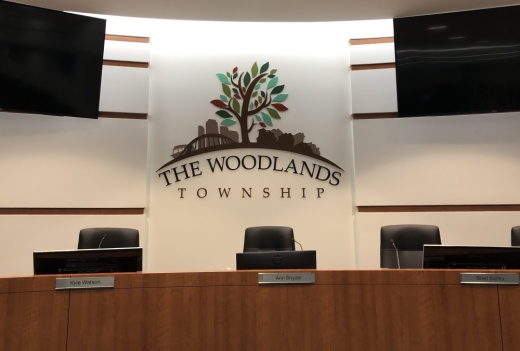Conserving water
After a lake and pond management plan was approved in 2013, The Woodlands has made water conservation and usage a focus. Water conservation efforts over the past 10 years have led to a 43% decline in per-person, per-day water usage, which currently sits at 91 gallons per day on average.
While water conservation efforts have been successful, Township Chief Operating Officer Chris Nunes said residents are starting to draw attention to low water levels in the roughly 68 ponds around The Woodlands.
Based on the current drought management plan, San Jacinto River Authority limitations and agreements with Municipal Utility District 386, the township is not able to pump water into ponds unless they are below 50% capacity and present a water health issue to the environment.
“We only look at filling up ponds until we go below the 50% capacity level,” Nunes said. “That means if your pond is ... at 10 feet it’s got to go down to five before we really start looking at if we need to fill this with a other source.”
The other sources included well water and surface water. However, the township is limited through pumping permits to 9.5 million gallons to ponds.
“It’s a feast or famine issue,” said Nunes. “You are either flooded with water like we were yesterday or you are in a quote unquote drought situation, and what you see over a period of time—is it does balance out.”
Examining options
The township sought ideas from Bleyl Engineering on potential solutions to Kayak Pond in particular, which has no access to stormwater runoff and typically suffers from low levels due to evaporation.
To help with flow to Kayak, Bleyl recommended installing inlets to collect more stormwater, a project which could cost around $100,000. Another issue is that north and south Kayak are not directly connected, so they do not have a way to even their water levels naturally.
Installing aquifer wells to directly refill Kayak were also looked at; however, the cost to install a single well approached $30,000.
As for the other ponds in The Woodlands, Nunes told the board that the difference in the size and location of ponds provides too much variation in the amount of water needed to fill each pond.
“They are all different shapes, they’re all different sizes. You cannot have every pond be at 100% all the time," he said.
Nunes also expressed having room for the ponds to take on additional rain and stormwater is crucial to help with local flooding around the area. By keeping the ponds at full capacity, it removes room for them to take on additional water.
As a result, the board unanimously agreed to take another look at the drought management plan and see what alternatives were available to help keep the ponds at capacity for residents while also not causing extreme water consumption.
The next township board meeting will be Jan. 27 at 9 a.m. for a Strategic Planning Session at 2801 Technology Forest Blvd.,The Woodlands.





